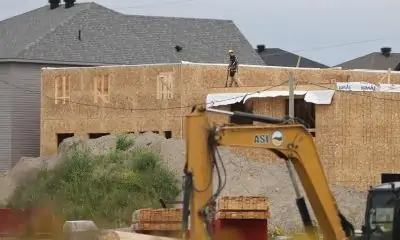
Courtesy Misako & Rosen, Tokyo, and 47 Canal, New York
Kazuyuki Takezaki, a painter whose blurry, washed-out landscapes made him a closely watched artist of Japan’s art scene, has died at 48 after a heart attack. Jeffrey Rosen, cofounder of Takezaki’s Tokyo-based representative Misako & Rosen, confirmed the artist’s death and said his gallery was working to establish an estate for Takezaki.
Takezaki died just weeks after the closure of his first major New York solo exhibition, at 47 Canal gallery. That show featured recent paintings of trees, mountains, greenery, and more that he spotted in Marugame, the seaside city in Japan where he was based.
These paintings, with their forms that melt into abstraction, attest to a natural world that is slipping away, given that manmade industrial interventions now pose a significant threat to the area around Marugame. “Communicating a profound yet fleeting sense of place, Takezaki’s windows onto this constantly shifting environment are also reflections on time, memory, and the porous overlaps between subject and object,” Andrew Maerkle wrote in an essay accompanying the 47 Canal show.
The 47 Canal show was one of the few exhibitions Takezaki had held in the US. In Japan, he had built a significant resume, with solo shows held at the Kochi Museum of Art and Misako & Rosen.
He was born in Kochi, Japan, in 1976, and his birthplace would continue to loom large over his practice. “Such a combination, that of the natural and artificial within this town so full of possibility and prompts my imagination,” he wrote in an exhibition text for a 2008 Misako & Rosen exhibition.
Takezaki went on to attend Kochi University. Then, upon graduation in 1999, he relocated to Tokyo, where he focused on building out his artistic practice.
Early on, Takezaki’s art appeared in group shows held by blue-chip galleries, such as New York’s Yvon Lambert and Tokyo’s Ota Fine Arts. But it was a gallery of Takezaki’s making that helped earn his place in the Japanese scene: Takefloor, which he launched within his small Tokyo apartment.

Courtesy Misako & Rosen, Tokyo, and 47 Canal, New York
Jeffrey Rosen, Takezaki’s dealer, credited Takefloor with acting as a catalyst for experimental art in the Japanese art scene. Rosen credited Takefloor with inspiring him to open Misako & Rosen, telling Artspace in 2015 that Takezaki’s gallery “gave everybody of our generation the courage to start opening up our own space.”
After working in Tokyo for a period, Takezaki returned to Kochi, then moved to Marugame. In the latter city, he began making his “Board / Table” paintings, for which he would attach a canvas to a board, then drive beyond the city with it. In view of mountains and trees, he would depict what he saw in oil stick, working quickly in an attempt to make permanent all this nature in flux over the course of several days. Some of these works appeared this year at 47 Canal and in 2023 at Milwaukee’s Green Art Gallery, in his first US solo show.
Though they started out figural, these pieces quickly dissolved into blobs of muted color. “At dusk,” Takezaki once remarked, “I often see the town horizontally divided into upper and lower halves by transparent and opaque color.”


LONDON (AP) — With a few daubs of a paintbrush, the Brontë sisters have got their dots back.
More than eight decades after it was installed, a memorial to the three 19th-century sibling novelists in London’s Westminster Abbey was amended Thursday to restore the diaereses – the two dots over the e in their surname.
The dots — which indicate that the name is pronounced “brontay” rather than “bront” — were omitted when the stone tablet commemorating Charlotte, Emily and Anne was erected in the abbey’s Poets’ Corner in October 1939, just after the outbreak of World War II.
They were restored after Brontë historian Sharon Wright, editor of the Brontë Society Gazette, raised the issue with Dean of Westminster David Hoyle. The abbey asked its stonemason to tap in the dots and its conservator to paint them.
“There’s no paper record for anyone complaining about this or mentioning this, so I just wanted to put it right, really,” Wright said. “These three Yorkshire women deserve their place here, but they also deserve to have their name spelled correctly.”
It’s believed the writers’ Irish father Patrick changed the spelling of his surname from Brunty or Prunty when he went to university in England.
Raised on the wild Yorkshire moors, all three sisters died before they were 40, leaving enduring novels including Charlotte’s “Jane Eyre,” Emily’s “Wuthering Heights” and Anne’s “The Tenant of Wildfell Hall.”
Rebecca Yorke, director of the Brontë Society, welcomed the restoration.
“As the Brontës and their work are loved and respected all over the world, it’s entirely appropriate that their name is spelled correctly on their memorial,” she said.
The Canadian Press. All rights reserved.

In a case that has sent shockwaves through the Vancouver Island art community, a local art dealer has been charged with one count of fraud over $5,000. Calvin Lucyshyn, the former operator of the now-closed Winchester Galleries in Oak Bay, faces the charge after police seized hundreds of artworks, valued in the tens of millions of dollars, from various storage sites in the Greater Victoria area.
Alleged Fraud Scheme
Police allege that Lucyshyn had been taking valuable art from members of the public under the guise of appraising or consigning the pieces for sale, only to cut off all communication with the owners. This investigation began in April 2022, when police received a complaint from an individual who had provided four paintings to Lucyshyn, including three works by renowned British Columbia artist Emily Carr, and had not received any updates on their sale.
Further investigation by the Saanich Police Department revealed that this was not an isolated incident. Detectives found other alleged victims who had similar experiences with Winchester Galleries, leading police to execute search warrants at three separate storage locations across Greater Victoria.
Massive Seizure of Artworks
In what has become one of the largest art fraud investigations in recent Canadian history, authorities seized approximately 1,100 pieces of art, including more than 600 pieces from a storage site in Saanich, over 300 in Langford, and more than 100 in Oak Bay. Some of the more valuable pieces, according to police, were estimated to be worth $85,000 each.
Lucyshyn was arrested on April 21, 2022, but was later released from custody. In May 2024, a fraud charge was formally laid against him.
Artwork Returned, but Some Remain Unclaimed
In a statement released on Monday, the Saanich Police Department confirmed that 1,050 of the seized artworks have been returned to their rightful owners. However, several pieces remain unclaimed, and police continue their efforts to track down the owners of these works.
Court Proceedings Ongoing
The criminal charge against Lucyshyn has not yet been tested in court, and he has publicly stated his intention to defend himself against any pending allegations. His next court appearance is scheduled for September 10, 2024.
Impact on the Local Art Community
The news of Lucyshyn’s alleged fraud has deeply affected Vancouver Island’s art community, particularly collectors, galleries, and artists who may have been impacted by the gallery’s operations. With high-value pieces from artists like Emily Carr involved, the case underscores the vulnerabilities that can exist in art transactions.
For many art collectors, the investigation has raised concerns about the potential for fraud in the art world, particularly when it comes to dealing with private galleries and dealers. The seizure of such a vast collection of artworks has also led to questions about the management and oversight of valuable art pieces, as well as the importance of transparency and trust in the industry.
As the case continues to unfold in court, it will likely serve as a cautionary tale for collectors and galleries alike, highlighting the need for due diligence in the sale and appraisal of high-value artworks.
While much of the seized artwork has been returned, the full scale of the alleged fraud is still being unraveled. Lucyshyn’s upcoming court appearances will be closely watched, not only by the legal community but also by the wider art world, as it navigates the fallout from one of Canada’s most significant art fraud cases in recent memory.
Art collectors and individuals who believe they may have been affected by this case are encouraged to contact the Saanich Police Department to inquire about any unclaimed pieces. Additionally, the case serves as a reminder for anyone involved in high-value art transactions to work with reputable dealers and to keep thorough documentation of all transactions.
As with any investment, whether in art or other ventures, it is crucial to be cautious and informed. Art fraud can devastate personal collections and finances, but by taking steps to verify authenticity, provenance, and the reputation of dealers, collectors can help safeguard their valuable pieces.
[unable to retrieve full-text content]
Ukrainian sells art in Essex while stuck in a warzone BBC.com

Source link


DeBrusk scores second goal in overtime to give Canucks pre-season win over Flames


New Brunswick election: Conservatives promise financial literacy curriculum


Housing starts up in six largest cities but construction still not closing supply gap
Fairness for every generation: more than an empty slogan, not yet a reality


How Many Votes Are Needed for a Vote of No Confidence in Canada?


Rising prices pinch B.C. households. Political parties feel the pressure, too


Sharks’ Celebrini and Smith and Canadiens’ Slafkovsky headline the NHL’s next generation of stars


Party leaders of different stripes seem to agree on involuntary addiction treatment